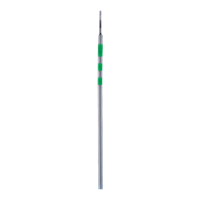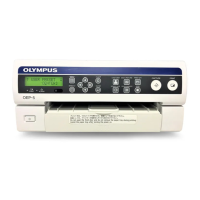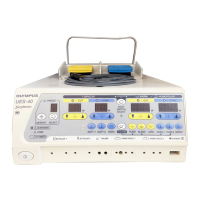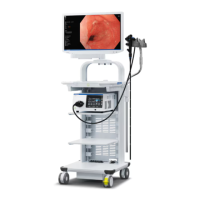Chapter 4 Operation
29
VISERA RHINO-LARYNGO VIDEOSCOPE ENF-V2
Insertion of the endoscope
If necessary, apply a medical grade, water-soluble lubricant to the insertion tube.
• The shape and size of the nasal cavity and its suitability for
transnasal insertion may vary from patient to patient. No
endoscope, including this one, can always be inserted
transnasally with all patients. Before proceeding, always be
sure to confirm that transnasal insertion is possible with the
patient. Otherwise, operator and/or patient injury can result or
the endoscope could become lodged and be difficult to
withdraw.
• Transnasal insertion of the endoscope should be performed
carefully. If resistance to insertion is felt, or the patient reports
pain, stop insertion immediately. Otherwise, operator and/or
patient injury can result or the endoscope could become
lodged and be difficult to withdraw.
• Do not apply olive oil or products containing petroleum-based
lubricants (e.g., vaseline). These products may cause
stretching and deterioration of the bending section’s
covering.
• Do not allow the insertion tube to be bent within a distance of
10 cm or less from the junction of the boot. Insertion tube
damage can occur (see Figure 4.2).
Figure 4.2

